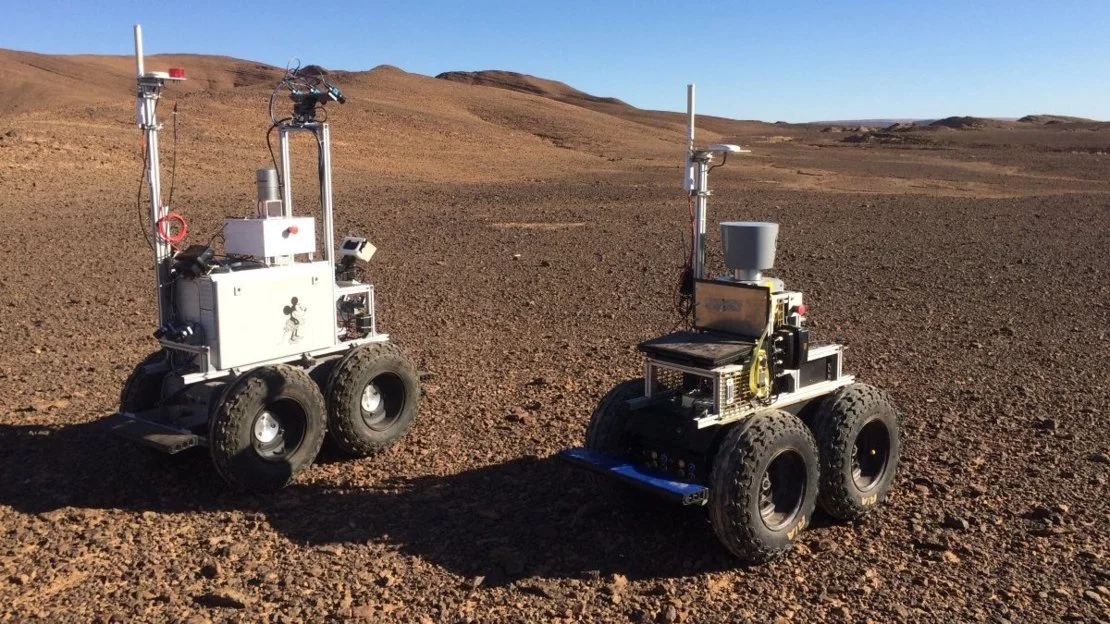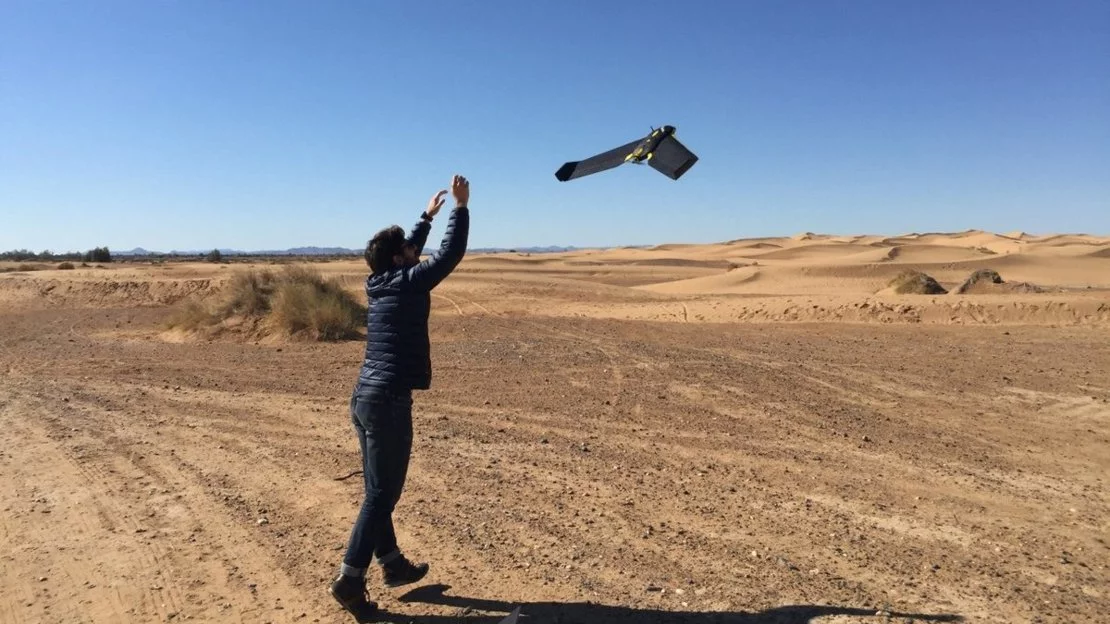Three autonomous Mars rovers have been put through their paces in a barren corner of the Sahara Desert in Morocco. Overlooked by over 40 engineers and organized by Germany's DFKI Robotics Innovation Centre, this robot jamboree was designed to test automated navigation and other space robotics technologies in anticipation of future planetary missions.
Funded by the European Union's Horizon 2020 program and coordinated by the international Project Plan European Roadmap and Activities for Space Exploitation of Robotics and Autonomy (PERASPERA), the tests were conducted at the Ibn Battuta Centre, near Erfoud on the northern edge of the Sahara Desert. This area was chosen because the EU's Europlanet Research Infrastructure regards it as a good analog of the Martian environment.
The field tests for the rovers began with ESA drone overflying the test area to provide a digital topographic map with a resolution of 4 cm (1.6 in). Combined with the rover's data, the space agency says that this would provide a dataset for validating ESA's own algorithms.

During the testing, there were a number of surprises. Because the sand dunes were so uniform, the computer vision algorithms had trouble navigating them. Engineers say this was because the robots were programmed to identify features by how they differ from one another and the homogeneity of the dunes confused them.
On a more positive note, the SherpaTT rover navigated 1.3 km in autonomous mode and was even able to send a request back to the main planner when it found some unusual stones and needed to move to a better spot to collect images. It's an example of how future rovers will have to make their own decisions rather than rely on analysts constantly monitoring them.
The field test included Germany's DFKI and DLR Institute of Robotics and Mechatronics, Space Application Services in Belgium, Magellium and the Laboratory for Analysis and Architecture of Systems, LAAS, in France, GMV in Spain, Kings College London, and Airbus. The next phase will be an orbital space demonstrator mission in 2023.

"What this kind of field test gives you is the proof of the pudding that your design is working well, even in some of the most challenging environments we can imagine," explains Gianfranco Visentin, head of ESA's Automation and Robotics section. "Lab testing of the hardware we design doesn't take account of the variability nature brings, from the light of the sky to the shape of the landscape, the texture and colors of the sand and rock. Operating outdoors in this way proves that our systems work in much more complex and elaborate settings than can ever be simulated."
The video below introduces the multi-rover field test.
Source: ESA








